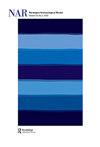从斯堪的纳维亚的一次体验看住宅
IF 0.8
3区 历史学
0 ARCHAEOLOGY
引用次数: 0
摘要
这是一个基于两篇文章的思考的讨论,这两篇文章涉及与权力住所相关的遗址研究的模式和挑战,这些遗址主要可追溯到公元前6-8世纪,来自英格兰南部和爱尔兰。每项研究都牢牢地固定在各自地区的现有数据中。在这方面,它们可以作为案例研究,讨论幸存考古材料和文学证据的不同程度和性质使直接比较变得困难的地区。然而,每一项贡献都体现了一种雄心,即更好地了解中世纪初期欧洲这一地区的权力所在。这一时期的文学资料普遍缺乏(当然,爱尔兰除外),这使得考古学在这一时期更加重要。王室关系是这些讨论的核心,在爱尔兰的案例中,这些关系更加明确,因为Gleeson的研究是基于对已知王室遗址的调查。在英国的案例中,王室之间的联系有些模糊,只是因为爱尔兰的文学来源在国王和地方之间的联系方面很突出。另一方面,如果研究的主要目标是在更广泛、更普遍的层面上识别物质文化中表现出的结构、意识形态、思想等,那么与王权的联系可能会分散注意力。由于这两篇文章都涉及广泛的结构和变化,因此可能会从中引出许多潜在的讨论点。不幸的是,在这里只能处理其中的一些问题。我的起点是斯堪的纳维亚考古,尤其是瑞典中部。每一篇文章都有一个“站在一边”的特点,这使得它们与几个领域正在进行的研究非常相关。鉴于近年来对权力和中心地位的大量研究,它们在理论上也具有相关性。很有意思的是,在未来几年里,这一话语将在多大程度上改变西北欧目前主要是8/9世纪以前的结构。这两项贡献都代表着对曾经被称为“中心地带”的遗址的新尝试,特别是从20世纪80年代起在斯堪的纳维亚半岛。这个词在很少有定居点被挖掘出来的时候被频繁使用,很多证据都是基于零散的发现、早期的金属探测器调查以及后来的地名和景观研究。中心位置的讨论非常活跃,有许多新的重要贡献,但这也是一个解释因缺乏实质性内容而受到限制的时期本文章由计算机程序翻译,如有差异,请以英文原文为准。
Reflections on Residences from one Scandinavian Experience
This is a discussion based on reflections of two articles that address patterns and challenges surrounding the study of sites relating to residences of power, dating primarily from the 6–8 centuries CE, from southern England and Ireland. Each study is firmly anchored in the existing data from their respective regions. In this, they can be taken as case studies for the discussion of regions where the varying extent and nature of surviving archaeological material and literary evidence makes direct comparison difficult. However, each contribution embodies an ambition to establish a better understanding of places of power in this part of Europe during the dawn of the Middle Ages. The general lack of literary sources dating from the period (except from Ireland of course), makes archaeology even more important for this period. Royal connections are central to these discussions, and in the Irish case they are even more explicit as Gleeson is basing his study on investigations of known royal sites. In the English case, the royal connections are somewhat more vague, simply because the literary sources from Ireland are outstanding when it comes to the connection between kings and places. The connection with kingship is on the other hand potentially a distraction if the primary ambition of the study is to identify structures, ideologies, ideas etc. manifested in material culture on a broad and more general level. As both articles deal with broad structures and changes, there are numerous potential points of discussion that might be drawn from them. Unfortunately, it is only possible to deal with a few of these here. My starting point is Scandinavian archaeology, Central Sweden in particular. Each article has a ‘stand-der-forschung’ character, making them very relevant for ongoing research in several areas. They are also theoretically relevant in light of the substantial amount of presented research on places of power and centrality that has been produced in the recent years. It will be very interesting to see how much this discourse will alter the current picture of primarily pre-8/9 century structures in Northwestern Europe in the coming years. Both contributions represent new attempts to understand sites that once were labelled as ‘central places,’ particularly in Scandinavia from the 1980s onwards. This term became frequently used at a time when few settlements had been excavated and lots of evidence was based on stray finds, early metal detector surveys, and later place names and landscape studies. The central place discussion was very dynamic with many new and important contributions, but it was also a period in which interpretations were limited by the lack of substantial
求助全文
通过发布文献求助,成功后即可免费获取论文全文。
去求助
来源期刊

Norwegian Archaeological Review
ARCHAEOLOGY-
CiteScore
2.10
自引率
0.00%
发文量
13
期刊介绍:
Norwegian Archaeological Review published since 1968, aims to be an interface between archaeological research in the Nordic countries and global archaeological trends, a meeting ground for current discussion of theoretical and methodical problems on an international scientific level. The main focus is on the European area, but discussions based upon results from other parts of the world are also welcomed. The comments of specialists, along with the author"s reply, are given as an addendum to selected articles. The Journal is also receptive to uninvited opinions and comments on a wider scope of archaeological themes, e.g. articles in Norwegian Archaeological Review or other journals, monographies, conferences.
 求助内容:
求助内容: 应助结果提醒方式:
应助结果提醒方式:


